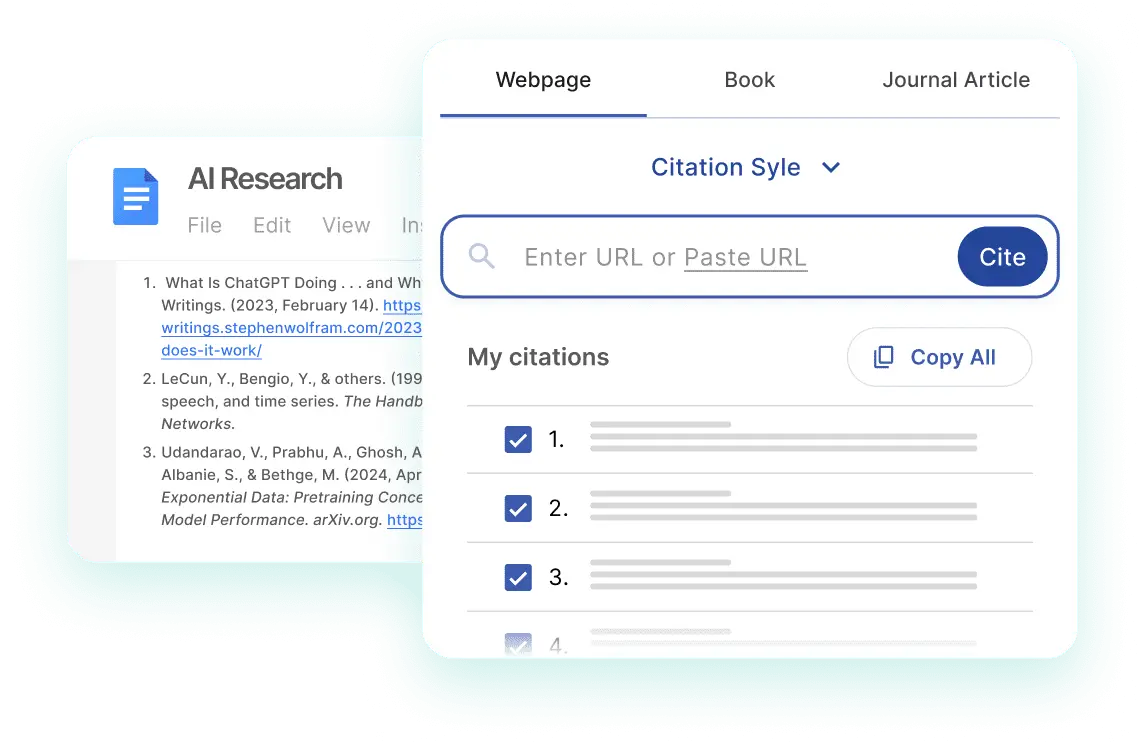Discover Undergraduate Literature Review Examples
Explore comprehensive undergraduate literature review examples to enhance your understanding and writing skills.
Try Justdone
Maximize Your Writing Potential
Effective Research
Access comprehensive literature review examples to streamline your research process.
Improved Writing
Enhance your writing skills by studying and referencing well-structured undergraduate literature review examples.
Time Efficiency
Save time on research by leveraging existing undergraduate literature review examples as a reference point.
Undergraduate Literature Review Example Benefits
Comprehensive Overview of Literature Review
An undergraduate literature review example offers a comprehensive overview of the chosen topic, providing valuable insights into existing research and academic discussions. This type of example helps students understand the structure, content, and critical analysis required for a literature review.
By examining a well-crafted undergraduate literature review, students can learn how to effectively summarize, analyze, and synthesize scholarly sources to develop a strong foundation for their own research projects. This practical example serves as a guide for students to navigate the complexities of conducting a literature review at the undergraduate level.
Try Justdone ->
Enhanced Understanding of Research Methods
Studying an undergraduate literature review example aids students in gaining an enhanced understanding of various research methods and approaches utilized in academic writing. It demonstrates the application of theoretical frameworks, methodologies, and data analysis techniques within the context of a literature review.
Through an example, students can observe how to critically evaluate the credibility and relevance of sources, integrate diverse perspectives, and identify research gaps. This experience fosters the development of essential research skills and fosters a deeper comprehension of the academic standards for conducting literature reviews.
Try Justdone ->
Improved Writing and Citation Proficiency
An undergraduate literature review example reinforces the development of students’ writing and citation proficiency by showcasing proper formatting, citation styles, and academic language usage. It provides a practical demonstration of how to incorporate in-text citations, create a reference list, and maintain consistency in citation formatting.
By examining an example, students can enhance their ability to paraphrase, summarize, and critically evaluate sources while adhering to academic integrity standards. This exposure contributes to refining their writing skills and reinforces the importance of ethical and accurate citation practices in scholarly work.
Try Justdone ->
Helpful Tips for Using Undergraduate Literature Review Examples
Analyze Structure and Organization
When using an undergraduate literature review example, pay close attention to the structure and organization of the content. Analyze how the introduction, body, and conclusion are presented, and observe how the author transitions between different ideas and sources. Understanding the structural elements enhances your ability to effectively organize your own literature review.
Furthermore, consider the thematic categorization of sources and the logical flow of ideas to gain insights into creating a well-structured and organized literature review.
Engage in Critical Evaluation
Engage in critical evaluation of the sources and arguments presented in the example literature review. Assess how the author critically analyzes and synthesizes information from various sources, identifying the strengths and limitations of each study. This practice cultivates your ability to critically evaluate scholarly sources and contributes to the development of a nuanced and well-informed literature review.
Additionally, consider the author's interpretation and synthesis of conflicting viewpoints, as this can provide valuable guidance for navigating differing perspectives in your own literature review.
Explore Citation and Referencing
Explore the citation and referencing practices employed in the example literature review. Observe how the author integrates in-text citations, references diverse sources, and adheres to the prescribed citation style. By examining the citation practices, you can enhance your understanding of proper referencing and citation formatting, ensuring accuracy and consistency in acknowledging the sources used in your literature review.
Furthermore, pay attention to how the author effectively integrates evidence from various sources to support arguments and strengthen the scholarly foundation of the literature review.
Identify Research Gaps and Contributions
Identify the research gaps and contributions highlighted in the example literature review. Consider how the author identifies areas for further research or proposes potential contributions to the academic discourse. This practice enables you to develop a discerning eye for identifying research gaps in existing literature and offers insights into articulating the significance of your own research within the scholarly landscape.
By recognizing the contributions of the reviewed studies and identifying areas for future exploration, you can enrich the scholarly dialogue within your literature review.
Emulate Academic Writing Style
Emulate the academic writing style and language utilized in the example literature review. Pay attention to the formal tone, scholarly language, and precise articulation of ideas employed by the author. By observing and emulating the academic writing style, you can refine your own writing proficiency and develop a scholarly voice that aligns with the academic standards for literature reviews.
Additionally, consider the clarity of expression, coherence of arguments, and the use of academic vocabulary to enhance the effectiveness of your literature review writing.
Exploring Undergraduate Literature Review Examples
Discover the practical application of undergraduate literature review examples through the following scenarios, providing valuable insights for your academic pursuits.
Create a draft illustrating the application of various research methods within an undergraduate literature review example, emphasizing the significance of methodological diversity and its impact on the review's credibility and comprehensiveness.
Incorporating diverse research methods within an undergraduate literature review example is essential to demonstrate the comprehensive nature of the review. By integrating quantitative, qualitative, and mixed-methods studies, the review can offer a holistic understanding of the research topic, encompassing different perspectives and empirical evidence. This approach enriches the credibility and comprehensiveness of the literature review, as it presents a well-rounded synthesis of relevant studies.
The use of varied research methods also enables the exploration of different facets of the research topic, allowing for a nuanced analysis of the findings and contributing to a comprehensive understanding of the subject matter. By incorporating methodological diversity, the literature review can address the complexity of the research area and provide a more robust foundation for subsequent academic inquiries.
Furthermore, the inclusion of diverse research methods underscores the interdisciplinary nature of the review, highlighting its relevance across varied academic domains. This interdisciplinary approach enhances the review's contribution to the scholarly discourse, as it engages with diverse methodological frameworks and expands the scope of knowledge within the research field. Emphasizing the significance of methodological diversity in the undergraduate literature review example underscores the value of embracing varied research approaches to enrich the academic dialogue and strengthen the review's scholarly impact.
Develop a draft showcasing the critical analysis of conflicting viewpoints within an undergraduate literature review example, emphasizing the importance of synthesizing diverse perspectives to construct a comprehensive and balanced narrative.
Conducting a critical analysis of conflicting viewpoints within an undergraduate literature review example involves synthesizing diverse perspectives to construct a comprehensive and balanced narrative. By evaluating contrasting opinions and synthesizing disparate viewpoints, the review can present a nuanced understanding of the research topic, acknowledging the complexities and debates within the scholarly discourse. This approach fosters a comprehensive perspective that reflects the multidimensionality of the research area, offering readers a well-informed synthesis of divergent opinions.
Furthermore, the critical analysis of conflicting viewpoints contributes to the review's academic rigor, as it demonstrates the author's ability to navigate differing perspectives, identify commonalities, and delineate areas of divergence. This practice cultivates an appreciation for the complexity of the research landscape and reinforces the importance of presenting a balanced and inclusive narrative within the literature review.
Synthesizing diverse perspectives also enriches the scholarly dialogue by addressing the plurality of opinions and fostering an environment of intellectual engagement. By acknowledging and reconciling conflicting viewpoints, the undergraduate literature review example contributes to the advancement of knowledge by presenting a comprehensive analysis that encapsulates the diversity of scholarly discourse.